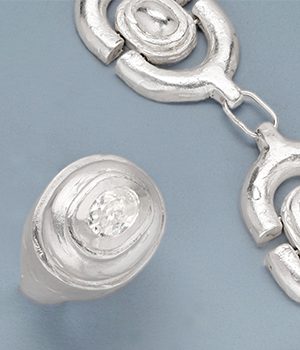e.g.etal moves to glittering new gallery on Little Collins Street
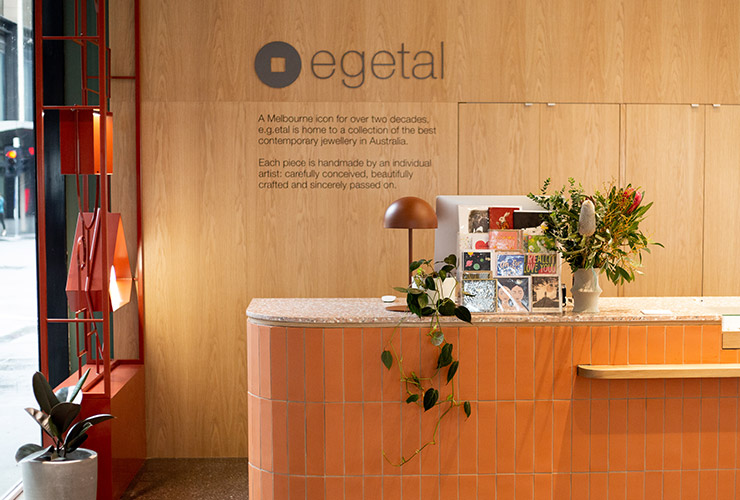
A Melbourne icon for over two decades, e.g.etal is home to one of the best contemporary jewellery collections in Australia.
The iconic gallery, now owned by brother-sister duo Chelsea and Jaime Gough, has been reimagined in a new bright street level store designed by Amber Laing of Circle Studio: a complete contrast to the previous subterranean premises.
We chat with Chelsea about how the new space came to life.
Why did you choose this location?
The decision to move actually came before Jaime and I joined the business, so deciding on a location was our first task as new owners. We began looking around places like Gertrude St, but soon realised that e.g.etal will always belong to Melbourne City – a special place to experience when you come into the CBD for a weekend of shopping or a night out at the theatre.
This narrowed the brief. We didn’t want to be too far away from the current space, and did a lot of walking around the city looking in shop windows and canvassing options.
When we found 150 Little Collins St, I immediately loved the concrete floors and ceiling-high windows. Plus, unlike a lot of places we saw, it was a blank canvas, where we wouldn’t have to pull back layers and layers of stuff from times gone by.
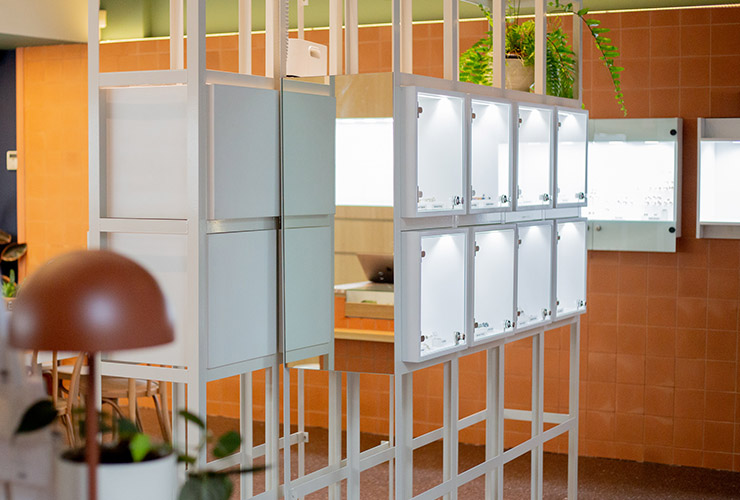
Tell us a bit about the design brief
The space on Flinders Lane is a nurturing, private cocoon, where people can come and meet about things that are incredibly sentimental and personal to them. This environment provides the confidence to relax and have those conversations that need to be had around precious jewellery items.
Moving above ground, we wanted to maintain this atmosphere. However, the new space has floor to ceiling windows, so our first challenge was how to preserve that sense of warmth and intimacy in a gallery that is so open and exposed.
We needed something that would give privacy to our clients, but was also striking from the street. It also had to convey to passers-by that we weren’t an antique trade jeweller, but exhibitors of contemporary, sophisticated art.
This is how we came to create the steel frames that fill the front window. Reflecting the language of gemstones and jewellery, the structure is composed of simple shapes and forms, which will be filled with a combination of digital images, textured glass and display cases to be filled with our artist’s work.
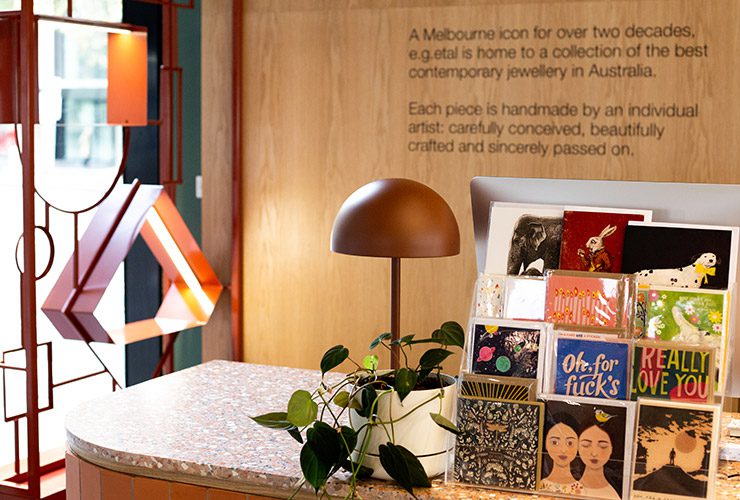
How about the decision to bring colour and texture in it?
It just seemed like the right thing to do. The previous gallery space was in a basement, with no street frontage. It is all walls, which speaks more of a typical ‘gallery’ to me. This new space is above ground and filled with light and movement, so we needed to embrace that.
In times gone by, art was originally displayed against ornate wallpapers and textures, before we went through this ‘white box’ phase which was informed by the operational practicalities of running a gallery. A white walled gallery meant that businesses could show exhibition after exhibition without having to redecorate over and over again. But now, gallery design is becoming a lot more dynamic, challenging and different.
We still have our ‘white boxes’: these are the display cabinets that jewellery sits in. But for the environment around that, we wanted something that spoke to the natural elements.
The majority of objects that we work with and represent come out of the ground. So our space needed to be earthy, calming, make people feel comfortable, but also have an element of sophisticated midcentury design. Sophisticated and earthy feel like they are at opposite ends of the spectrum, but they don’t have to be if you can tread that line.
We have also brought a lot of things over from our old gallery, such as the steel grid structure, consultation table and a lot of the display cases. The table has been resurfaced in a beautiful American Oak, and we have reformed and powder-coated the freestanding ‘grid’ display that longtime visitors will recognise.
As well as obvious cost benefits, it was always important for us to recycle as much of our existing furniture as possible to save things from going to landfill and to be environmentally conscious.
It is comforting to have the echoes of our past introduced into the design, a reminder that although we are growing and changing, our essence will always remain the same.
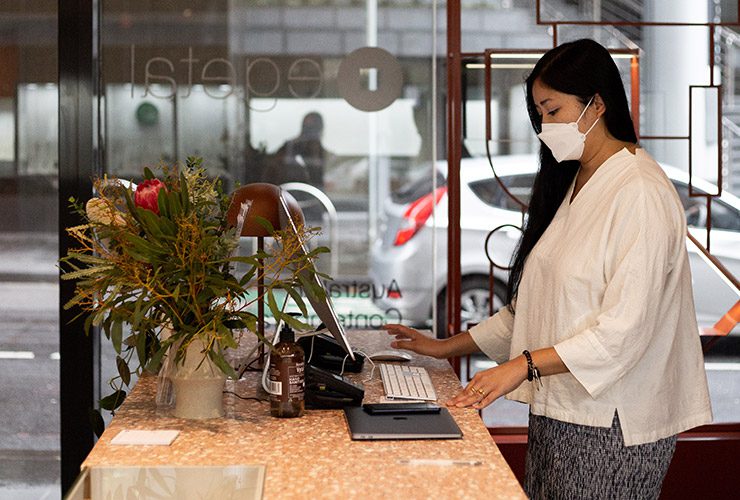
The new gallery is now open to the public, and can be found at 150 Little Collins Street, Melbourne (near the corner of Russell)

